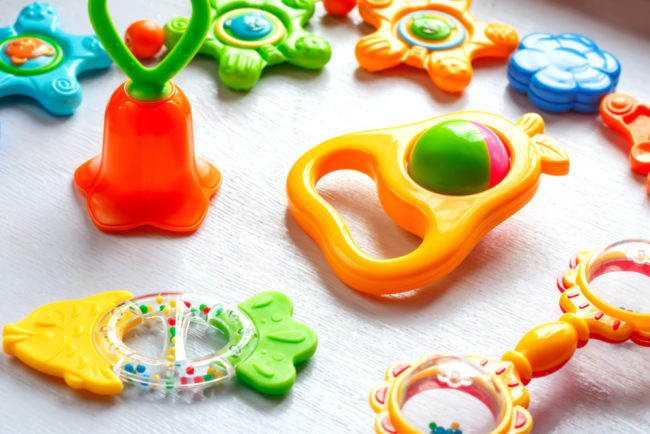Believe it or not, toy-related injuries are common. In fact, a study published in the journal Clinical Pediatrics in 2014 found that approximately 18 children suffer a serious toy-related injury every hour. In other words, every three minutes, a child is hurt seriously enough by a toy that emergency care is required.
In 2019, an estimated 224,200 toy-related injuries for all ages were treated in US hospital emergency departments. That’s pretty staggering!
How can you make sure the toys you select are safe? Check out these tips when buying or assembling gifts this year.
1. Look for four basic essentials.
According to the National Association for the Education of Young Children, you want to select toys that are well-made, painted with nontoxic, lead-free paint, shatter-proof and easily cleaned.
What exactly does “well-made” mean? You want the toy to pass the eye test. Look for quality design and construction, with no pieces that could splinter off or pinch.
If any of your child’s toys fail this test, put them away immediately.
2. Make sure toys are age-appropriate.
When choosing toys, it’s important to keep in mind the recipient’s age and development level.
Toys are labeled with age recommendations — and it’s important to pay attention to them. Those recommendations are made by considering toy diameter and length and are designed to prevent babies and toddlers from choking on small toy parts.
When it comes to stuffed toys, choose a type that has sewn eyes and mouth, rather than removable parts such as button eyes, for the littlest kids. For older kids, make sure all parts are sewn on securely and that the stuffed animal doesn’t contain pellets or stuffing that could cause choking.
For infants and other young children, you also want to avoid toys that have long strings or cords, which can become wrapped around a child’s neck. The American Academy of Pediatrics (AAP) recommends choosing toys with strings no longer than 12 inches.
3. Certain parts require caution.
If a toy contains buttons, batteries or magnets, proceed with caution. These items, if swallowed, can cause dangerous health issues, including gastrointestinal problems and even death.
Button batteries, in particular, are common these days — they can be found in everything from toys to watches to greeting cards. If these batteries are swallowed, they can get stuck in the esophagus, which can cause tissue damage and burns.
The AAP also recommends against leaving kids unattended with balloons. Balloons that have not been inflated and those that are broken are a choking hazard for kids under age 8.
4. With younger kids, skip toys that plug into an electrical outlet.
The AAP considers these items a no-go for children younger than age 10, since they can cause burns and electrical shock.
Instead, choose battery-operated toys for younger kids — and make sure the batteries are in a secured compartment that’s inaccessible to kids.
Teach older children how to play with electric toys properly, and only allow them to do so with adult supervision.
Beyond choosing the toy
Toy safety doesn’t end once you’ve selected a toy or once your child has opened a gift from someone else. It’s important to read the instructions about how to use toys. Once you understand how to use the toy the right way, make sure your child also knows.
Parents should check toys every so often to make sure they aren’t broken or otherwise hazardous. Damaged toys should be repaired or discarded.
If your child suffers a toy-related injury, Children’s Hospital at Erlanger offers comprehensive emergency services, including care designed specifically with the needs of kids in mind.






